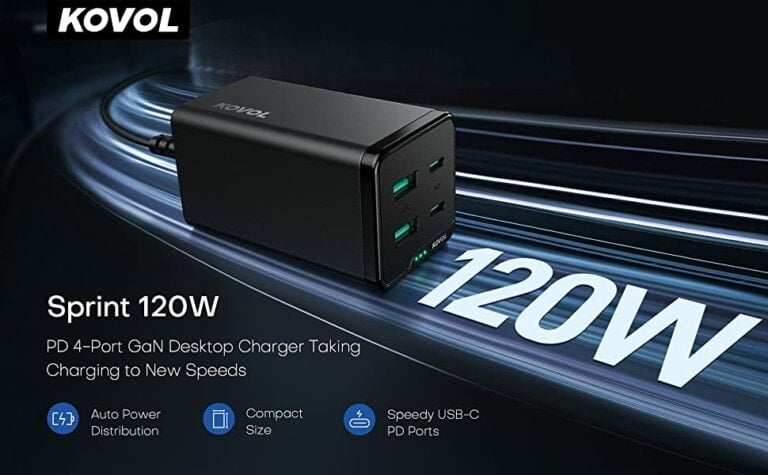Any links to online stores should be assumed to be affiliates. The company or PR agency provides all or most review samples. They have no control over my content, and I provide my honest opinion.
The Raspberry Pi has long been a favourite among hobbyists, makers, and educators for its versatility, affordability, and robust community support.
However, the Raspberry Pi 5 no longer represents the amazing value for money its predecessors offered. At the same time, there has been a growing number of competing single-board computers.
Raspberry Pi is famous for being developed and manufactured in the UK, but most consumer electronics nowadays are made in Asia, with China being the main source of most of our electronics. Some of the Raspberry Pi computers are also made in China and Japan.
Unfortunately, there have been growing concerns about security and ethics with Chinese electronics. There are a variety of sanctions against Chinese companies and things like computers and networking hardware are prone to having spyware installed.
I personally don’t care too much; reviewing technology for a living inevitably means I use Chinese electronics all day, every day.
For those who are wary about Chinese electronics or perhaps just want to support companies in local markets, this list covers some alternatives to the Raspberry Pi 5 that are not made in China (as far as I can tell)
Related Content
- Raspberry Pi 5 vs Raspberry Pi 4 Compared
- EVICIV Raspberry Pi Monitor Review
- Raspberry Pi 4 vs Odroid XU4 vs Odroid N2
- Raspberry Pi 4 (LibreELEC) vs Vero4K (OSMC) as a 4K HDR Kodi media player
- Raspberry Pi 4 Model B vs Raspberry Pi 3 Model B
OLinuXino: Bulgarian-Made Open Hardware

OLinuXino, designed and manufactured by OLIMEX Ltd in Bulgaria, stands out as a compelling alternative to the Raspberry Pi. These open hardware single-board computers are capable of running both Android and Linux operating systems, offering flexibility for a wide range of projects.
Manufacturing and Design
One of the key advantages of OLinuXino boards is their European origin. The entire manufacturing process takes place in OLIMEX’s factory in Bulgaria, which provides several benefits:
- Increased supply chain transparency
- Potential for faster delivery times within Europe
- Support for European technology manufacturing
Product Range
OLinuXino offers a variety of boards with different processors and capabilities. Some popular models include:
- A64-OLinuXino: Featuring a 64-bit quad-core ARM Cortex-A53 processor
- A20-OLinuXino: Powered by a dual-core ARM Cortex-A7 CPU
- iMX233-OLinuXino: A low-power option with an ARM9 processor
These boards cater to different performance needs and power consumption requirements, making them suitable for various applications from simple IoT devices to more complex computing tasks.
Open Hardware Advantage
The open hardware nature of OLinuXino boards provides several benefits:
- Full access to schematics and PCB design files
- Ability to modify and customize hardware for specific needs
- Transparency in component sourcing and design decisions
This openness aligns well with the ethos of many Raspberry Pi users who value the ability to understand and modify their hardware.
Performance and Compatibility
While OLinuXino boards may not match the raw performance of the latest Raspberry Pi 5 in all aspects, they offer competitive specifications for many use cases. The A64-OLinuXino, for instance, provides decent performance for tasks such as:
- Web browsing and light office work
- Media playback and streaming
- Basic game emulation
- IoT and home automation projects
Software compatibility is generally good, with support for popular Linux distributions and the ability to run many applications designed for ARM-based systems.
Limitations
It’s important to note some potential drawbacks of OLinuXino boards:
- Smaller community compared to Raspberry Pi, which may result in less readily available support and fewer tutorials
- Potentially higher prices due to European manufacturing costs
- Less extensive ecosystem of accessories and add-ons
ODROID: South Korean Innovation

ODROID, a series of single-board computers created by Hardkernel Co., Ltd. in South Korea, offers another compelling alternative to the Raspberry Pi. These boards have gained popularity for their performance and versatility, making them suitable for a wide range of applications.
| Preview | Product | Rating | Price | |
|---|---|---|---|---|

| ODROID N2 Single Board Computer (SBC) (4GB) with Power... | Buy on Amazon | ||

| HARDKERNEL ODROID C4-2.0GHz S905X3, 4GB RAM | Buy on Amazon |
Manufacturing and Origin
ODROID boards are primarily manufactured and tested in South Korea, with some exceptions:
- Most ODROID single-board computers are fully produced in South Korea
- The ODROID-H series undergoes SMT (Surface Mount Technology) processing in China, with PCB insertion production and testing done in South Korea
This mixed manufacturing approach is partly due to the sourcing of Intel chips, which are more readily available and cost-effective when procured through Chinese channels. While not entirely free from Chinese involvement, the majority of ODROID production remains in South Korea, offering a degree of diversification from fully China-made alternatives.
Product Range
ODROID offers a diverse lineup of boards catering to various performance needs and use cases:
- ODROID-N2+: A high-performance board with a hexa-core ARM processor
- ODROID-C4: A cost-effective option with a quad-core ARM Cortex-A55 CPU
- ODROID-XU4: Featuring an octa-core processor for demanding applications
These boards often boast impressive specifications, sometimes surpassing equivalent Raspberry Pi models in terms of raw performance.
Software Ecosystem
While the name ODROID suggests a focus on Android (Open + Android), these boards are capable of running various operating systems:
- Android for mobile and tablet-like experiences
- Ubuntu and other Linux distributions for desktop and server use
- Specialized distributions for retro gaming and media centers
This flexibility allows users to choose the most appropriate operating system for their specific projects or applications.
Performance and Use Cases
ODROID boards are known for their strong performance, making them suitable for demanding tasks such as:
- 4K video playback and encoding
- Advanced gaming emulation, including more recent console systems
- Server applications and network-attached storage (NAS) setups
- Machine learning and AI projects
The robust processing power of some ODROID models makes them particularly attractive for users who find the Raspberry Pi’s performance limiting for their needs.
Community and Support
While not as extensive as the Raspberry Pi community, ODROID has cultivated a dedicated following. Users can find support through:
- Official forums hosted by Hardkernel
- Third-party websites and blogs dedicated to ODROID projects
- GitHub repositories with software and tutorials
The community, though smaller, is often praised for its helpfulness and technical expertise.
Limitations
Some potential drawbacks of choosing ODROID over Raspberry Pi include:
- Higher prices for some models, reflecting their increased performance
- Less standardization across the product line, which may complicate accessory compatibility
- Potentially steeper learning curve for beginners due to less mainstream adoption
Arduino: Italian Design with Global Manufacturing

While not typically considered a direct Raspberry Pi alternative, Arduino boards deserve mention in this discussion due to their non-Chinese origin and widespread use in educational and maker communities. Arduino, an Italian company, offers a range of microcontroller boards that, while different in capability from the Raspberry Pi, can serve as alternatives for certain projects.
| Preview | Product | Rating | Price | |
|---|---|---|---|---|
![416S910MpBL. SL160 Arduino UNO R4 WiFi [ABX00087] – Renesas RA4M1 + ESP32-S3,...](https://m.media-amazon.com/images/I/416S910MpBL._SL160_.jpg)
| Arduino UNO R4 WiFi [ABX00087] – Renesas RA4M1 + ESP32-S3,... |
£25.87 | Buy on Amazon |
Company Background and Manufacturing
Arduino was founded in Ivrea, Italy, and maintains its design and primary operations in the country. However, it’s important to note that Arduino’s manufacturing is more globally distributed:
- Some boards are manufactured in Italy
- Others are produced in various countries, including the United States
This diversified manufacturing approach helps Arduino maintain supply chain resilience while still keeping core operations outside of China.
Product Range
Arduino offers a wide variety of boards, each tailored for different use cases:
- Arduino Uno: The classic board, ideal for beginners and many basic projects
- Arduino Mega: Offering more I/O pins and memory for complex projects
- Arduino Nano: A compact board for space-constrained applications
- Arduino Portenta: A powerful board capable of running Linux, aimed at industrial applications
While these boards are not direct replacements for a Raspberry Pi in terms of computing power, they excel in scenarios requiring real-time control and interaction with sensors and actuators.
Use Cases and Applications
Arduino boards are particularly well-suited for:
- Physical computing projects involving sensors and actuators
- Robotics and automation
- IoT devices and smart home applications
- Educational projects teaching basic electronics and programming
The simplicity and robustness of Arduino make it an excellent choice for projects where a full-fledged computer like the Raspberry Pi might be overkill.
Software and Programming
Arduino uses its own integrated development environment (IDE) and programming language, which is based on C++. This environment is known for its simplicity, making it accessible to beginners while still offering depth for experienced users. Recent developments have also introduced:
- Arduino IoT Cloud for easier development of connected devices
- Support for Python programming on certain boards
- Integration with popular platforms like MATLAB and Simulink
Community and Ecosystem
One of Arduino’s greatest strengths is its vibrant community and extensive ecosystem:
- Vast library of tutorials, projects, and resources
- Wide range of compatible sensors, actuators, and shields
- Strong presence in educational institutions and makerspaces
This rich ecosystem can often compensate for the boards’ lower raw computing power compared to the Raspberry Pi.
Limitations
When considering Arduino as an alternative to Raspberry Pi, it’s crucial to understand their differences:
- Arduino boards typically cannot run full operating systems like Linux
- They have significantly less processing power and memory
- Most models lack built-in networking capabilities without additional hardware
BeagleBoard: Open Hardware with Partial U.S. Manufacturing

BeagleBoard, an open-source hardware platform, presents another interesting alternative to the Raspberry Pi. Developed by Texas Instruments in collaboration with Digi-Key and Newark element14, BeagleBoard offers a range of single-board computers that emphasize openness and flexibility.
Manufacturing and Origin
BeagleBoard’s manufacturing situation is somewhat complex:
- The BeagleBoard.org Foundation is a Michigan, USA-based non-profit corporation
- Some manufacturing is done by SeeedStudio, located in Shenzhen, China
- Other manufacturing partners include GHI Electronics, based in Michigan, USA
This mixed manufacturing approach means that while some BeagleBoard products may be made in China, others are produced in the United States. Potential buyers should check the specific model and manufacturing details if avoiding Chinese production is a priority.
Product Range
BeagleBoard offers several models catering to different needs:
- BeagleBone Black: A low-cost, high-expansion board popular for interfacing with hardware
- BeagleBoard-X15: A high-performance board with desktop-class capabilities
- PocketBeagle: A ultra-tiny-yet-complete Linux computer
These boards often feature Texas Instruments processors, differentiating them from the ARM-based processors common in many other SBCs.
Open Hardware Philosophy
BeagleBoard’s commitment to open hardware is a significant selling point:
- Full schematics and design files are available for all boards
- Encourages modification and customization
- Promotes transparency in the hardware development process
This openness aligns well with many users’ desire for fully understandable and modifiable hardware platforms.
Performance and Use Cases
BeagleBoard products are well-suited for a variety of applications:
- Industrial and automotive projects leveraging real-time capabilities
- Education and prototyping, especially for hardware-software integration
- IoT and edge computing applications
- Audio and video processing tasks
The performance of BeagleBoard products can vary significantly between models, with some high-end offerings competing favorably with the Raspberry Pi in terms of processing power.
Software Ecosystem
BeagleBoard supports a range of operating systems:
- Debian and other Linux distributions
- Android for some models
- Real-time operating systems for specific use cases
The platform also benefits from integration with common development tools and environments, making it accessible to both beginners and experienced developers.
Community and Support
While smaller than the Raspberry Pi community, BeagleBoard has cultivated a dedicated following:
- Active forums and mailing lists
- Extensive documentation and tutorials
- Support from Texas Instruments and other corporate partners
This community provides valuable resources for troubleshooting and project development.
Limitations
Some potential drawbacks of choosing BeagleBoard over Raspberry Pi include:
- Higher prices for some models
- Less mainstream adoption, potentially resulting in fewer readily available resources
- Complexity in determining the exact manufacturing origin of specific models
ASUS Tinker Board: Taiwanese Innovation with Global Manufacturing

The ASUS Tinker Board series offers another alternative to the Raspberry Pi, coming from the well-known Taiwanese computer and electronics company ASUS. While not entirely free from Chinese manufacturing, ASUS’s global production network provides some diversification.
| Preview | Product | Rating | Price | |
|---|---|---|---|---|

| Tinker Board 2S 6-Core 2.0GHz Rockchip RK3399 Single Board... | £162.14 | Buy on Amazon |
Manufacturing and Origin
ASUS, headquartered in Taiwan, has a complex global manufacturing network:
- As of 2009, ASUS had 8 manufacturing facilities, with 6 outside China and 2 within
- Current manufacturing locations may have changed since then
- Specific manufacturing details for the Tinker Board are not readily available
While it’s challenging to guarantee that a Tinker Board is not made in China, ASUS’s Taiwanese origin and global presence offer some level of supply chain diversification.
Product Range
The Tinker Board line includes several models:
- Tinker Board: The original model, offering performance comparable to older Raspberry Pi models
- Tinker Board S: An upgraded version with onboard storage and other improvements
- Tinker Edge T: A more recent model focusing on AI and edge computing capabilities
These boards often boast impressive specifications, sometimes surpassing equivalent Raspberry Pi models in terms of GPU performance and memory bandwidth.
Performance and Use Cases
ASUS Tinker Boards are known for their strong performance, particularly in areas such as:
- 4K video playback and encoding
- Gaming emulation
- AI and machine learning tasks (especially the Edge T model)
- General-purpose computing and server applications
The robust graphics capabilities of Tinker Boards make them particularly attractive for multimedia projects and digital signage applications.
Software Ecosystem
Tinker Boards support a range of operating systems:
- TinkerOS, an optimized Debian-based distribution
- Android for some models
- Other Linux distributions with some configuration
While the software ecosystem is not as vast as Raspberry Pi’s, it covers most common use cases and benefits from ASUS’s development efforts.
Community and Support
The Tinker Board community, while smaller than Raspberry Pi’s, offers several resources:
- Official ASUS forums and support channels
- Third-party forums and community projects
- GitHub repositories with software and tutorials
ASUS’s involvement provides a level of corporate backing that can be reassuring for some users, potentially offering more structured support than some community-driven projects.
Limitations
Some potential drawbacks of choosing a Tinker Board over a Raspberry Pi include:
- Higher prices, reflecting the boards’ performance and ASUS branding
- Smaller community and ecosystem compared to Raspberry Pi
- Less certainty about manufacturing origin due to ASUS’s global production network
Conclusion
While the Raspberry Pi remains a popular and versatile choice for single-board computers. But there are many excellent alternatives available. Many of these are made in China, but there are also plenty of superb options manufactured around the world.
OLinuXino stands out for its fully European manufacturing and open hardware design, making it an excellent choice for those prioritizing transparency and supporting European technology production. ODROID offers impressive performance, often surpassing the Raspberry Pi, with primary manufacturing in South Korea. Arduino, while not a direct Raspberry Pi replacement, provides an excellent platform for physical computing and educational projects, with Italian design and diversified manufacturing.
BeagleBoard’s open hardware approach and partial U.S. manufacturing make it an attractive option for those seeking transparency and potential domestic production. The ASUS Tinker Board, while not guaranteed to be manufactured outside China, offers strong performance and the backing of a major technology company.
It’s worth noting that completely avoiding Chinese components in consumer electronics is challenging, if not impossible. Even boards manufactured outside China will likely contain some Chinese-made components. However, the alternatives discussed here offer varying degrees of manufacturing diversification and transparency.
I am James, a UK-based tech enthusiast and the Editor and Owner of Mighty Gadget, which I’ve proudly run since 2007. Passionate about all things technology, my expertise spans from computers and networking to mobile, wearables, and smart home devices.
As a fitness fanatic who loves running and cycling, I also have a keen interest in fitness-related technology, and I take every opportunity to cover this niche on my blog. My diverse interests allow me to bring a unique perspective to tech blogging, merging lifestyle, fitness, and the latest tech trends.
In my academic pursuits, I earned a BSc in Information Systems Design from UCLAN, before advancing my learning with a Master’s Degree in Computing. This advanced study also included Cisco CCNA accreditation, further demonstrating my commitment to understanding and staying ahead of the technology curve.
I’m proud to share that Vuelio has consistently ranked Mighty Gadget as one of the top technology blogs in the UK. With my dedication to technology and drive to share my insights, I aim to continue providing my readers with engaging and informative content.
Last update on 2025-06-30 / Affiliate links / Images from Amazon Product Advertising API










